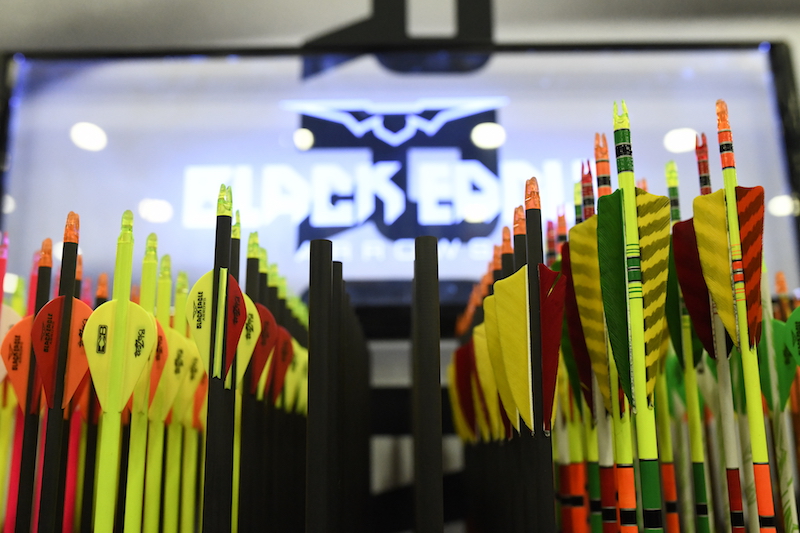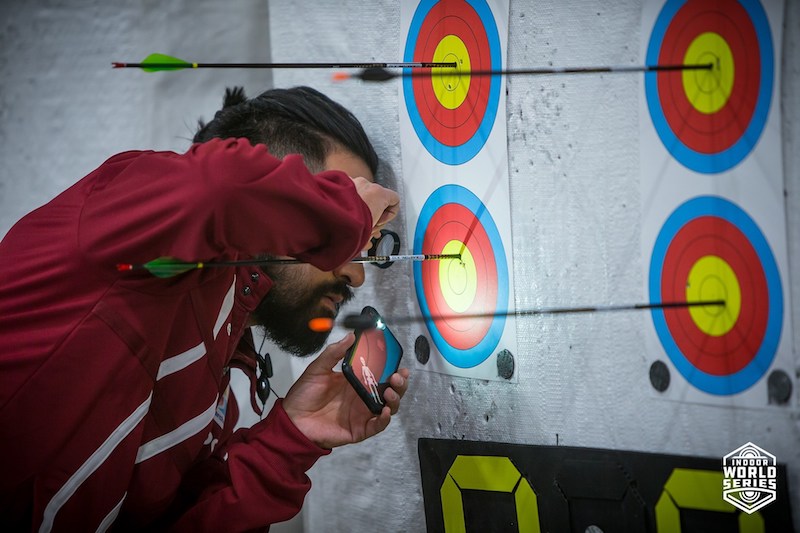It’s that time of year when many recurve archers debate whether to switch from skinny outdoor arrows to fat arrows for the indoor season. No matter which arrows they choose, archers can tweak them for better flight and maximum points at 18 meters.
One subtle change to consider is fletching. Given that an arrow spends only a fraction of the time in flight at 18 meters compared to outdoor distances, it has much less time to correct itself from deviations in shot execution. A longer fletch can help correct the arrow flight much more quickly. Attaching the fletching at a greater angle can also “catch” more air to help correct the flight.
Given those options and considerations, some archers change to fat arrows with feathers, some keep their skinny arrows with the same fletching, and some shoot skinny arrows with feathers to help with the drag.

If you change to a longer and heavier vane, you’ll alter your arrow’s balance, shifting its front-of-center balance toward the middle. You might need to fix that by slightly changing your point weight to maintain the arrow’s balance and make it more forgiving. In most cases, you must increase the point weight to make up for longer, heavier fletching.
Switching from skinny outdoor shafts to fat indoor shafts has other pros and cons. Fat arrows, of course, catch lines for possibly higher scores, but the subtle drawbacks of changing arrows can cause more harm than good.
A big consideration when switching to fatter, heavier arrows is the different feel of the bowstring leaving the fingers. Because of the arrow’s heavier weight, it leaves the fingers much slower than does a skinny arrow. That can gradually change an archer’s form and execution, and cause more arrows to miss the 10-ring.

Another consideration with fat arrows is that they might not tune as nicely as outdoor arrows like the Easton X10. The X10 arrow, with its nonparallel (barreled) shape, was made for recurve archers. Its shape helps the arrow’s tail end bend efficiently around the riser, offsetting bowstring oscillations caused by the fingers. The fat arrow’s parallel shaft does not bend as efficiently. When arrows can’t be effectively tuned, they’re less forgiving and possibly more frustrating. In general, recurve archers shooting higher draw weights have more success tuning fat arrows.
Sticking with your skinny arrows, of course, means your bow’s feel won’t change. You also won’t have to retune anything, which means you can focus on shot execution and timing much sooner than if you switch to fat arrows. The biggest downside is catching fewer lines on the target. The biggest upside? The bow’s familiar feel and well-tuned arrows keep you so comfortable with your equipment that you won’t need the fat arrow’s line-cutting features.




